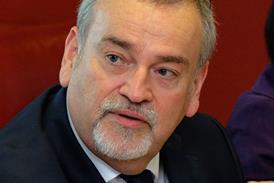Patient leaders have a valuable role to play in tackling the problems facing health and social care at a national and local level, but we need to improve the development of and access to learning opportunities in order to grow this pool of talent properly, says David Gilbert.
Amidst the chaos of reform and unprecedented challenges to improving health, the biggest asset we have - people who live with health problems and use services - remains untapped. Instead, patients are a problem to be solved, not the solution.
Meanwhile, patient and public engagement has been co-opted by institutional interests as a buffer against change, rather than as a co-production engine for it. Despite the rhetoric of “no decision about me without me”, organisational approaches to involve people seldom move beyond tokenistic consultations, questionnaires, one-off projects or overly-bureaucratic structures with a seat for a public representative. The engagement industry gathers data through an endless variety of specialist techniques but avoids using that intelligence to inform decisions.
Meanwhile, the NHS cry has gone out for new and innovative leaders to steer us through the storm. Leadership programmes for health professionals abound, yet the only people deemed worthy to lead are clinicians or managers.
Patients are innovators and entrepreneurs. Ill-health is crisis and opportunity - the crucible within which many have to re-think their lives, reframe and build new identities. Patients and users have the passion and empathy to help others and come up with creative solutions to the difficulties of everyday life.
When it comes to service quality, they see all too well what needs to improve and could provide innumerable ideas for how things could be better. But to the NHS, they are patients to be managed, potential complainants, questionnaire fillers, bed blockers or frequent flyers, waiting to be discharged like sewage from the system.
Patients are reduced to easily ignored units of data.
A few people rip up the questionnaires, knowing that nothing will happen to them, and determined to do something useful, surmount the innumerable barriers to getting more actively involved.
At the decision making table, the role of the representative is not clear: without clarity, people rely on personal experiences and are labelled as having an axe to grind. Or, in the process of trying to build relationships they cosy up to organisations and risk losing critical faculties - they are captured and tamed.
Lazy organisations rely on too few representatives to cover a dozen different committees. They think that having one or two reps ticks the engagement box. Then they complain about these isolated figures being the usual suspects. Patient representatives are marginalised whichever way they turn.
Even the words are loaded. Take the phrase: lay representative. “Lay” comes from “laity” invoking notions of a priesthood that excludes non-members. Sterile debates about whether patients can represent others serve to distract from a proper definition of the role, which is two-fold:
- Community channel – externally facing, keeping in touch with local communities and bringing in wider perspectives;
- Critical friend – internally facing, flying the patient flag and offering strategic advice from a non-institutional perspective.
Being clear on this “outsider-inside” role can lead to better discussions on the competencies required and what learning and support should be available.
But beyond the thousands of representatives or advisors, there are many others keen to lead change and improve health in the community. These are the health champions, community development practitioners, community researchers, peer-to-peer mentors or even patient entrepreneurs.
So, we have the emergence of two sorts of “patient leaders”:
- Transformers - System-facing leaders wanting to improve the health and social care system (the representatives and advisors)
- Enablers - Community-facing leaders wanting to improve health and well-being in their community
But, where is the learning and support for such a blossoming of talent? Professional development is a well-recognised term after decades of investment in staff training. Learning and support for patient leaders is almost non-existent.
What is available is often shoddy: it is too focused on institutional needs and fitting square pegs into round holes. It is didactic. A sheep-dip approach to induction entails stuffing people with knowledge and boring detail about structures, committees and acronyms. No wonder people turn off.
There is a need to develop new patient leaders - to widen the pool of talent and provide systematic approaches to learning and development that support a broader array of engagement opportunities for the transformers and enablers. We need to develop different modes of learning for patient leaders, based on experiential and accessible learning opportunities.
Learning should be co-produced with patients and carers. It must focus on what matters to them, for instance how to deal with professionals and navigate the system, build trusting relationships in order to influence decision making and developing the skills of dialogue.
More ambitiously, there is a need to provide multiple and flexible opportunities for progression – the “lay representative” route is one possible form of active involvement. But could a FT member become a parent governor? Or vice-versa? How do we build pathways together for Patient Leadership that could provide routes to citizen empowerment and co-production?
But before that, let’s develop the learning for a new generation of unusual suspects. Patient leaders can truly help tackle the crises in health and social care.
Find out more
The quiet revolutionaries: patient leaders
- 1
- 2
- 3
- 4
 Currently reading
Currently readingThe rise of the patient leader
- 5






























7 Readers' comments